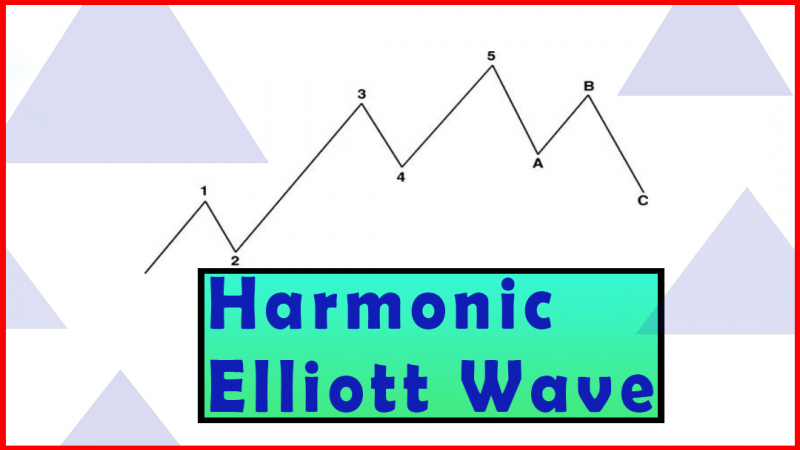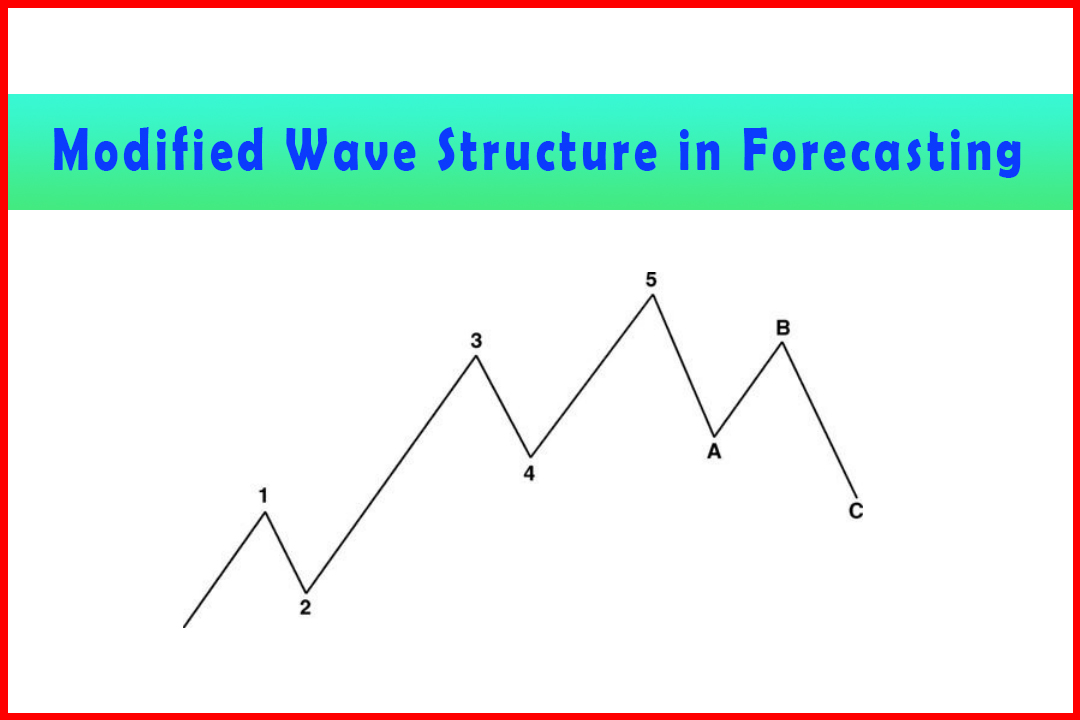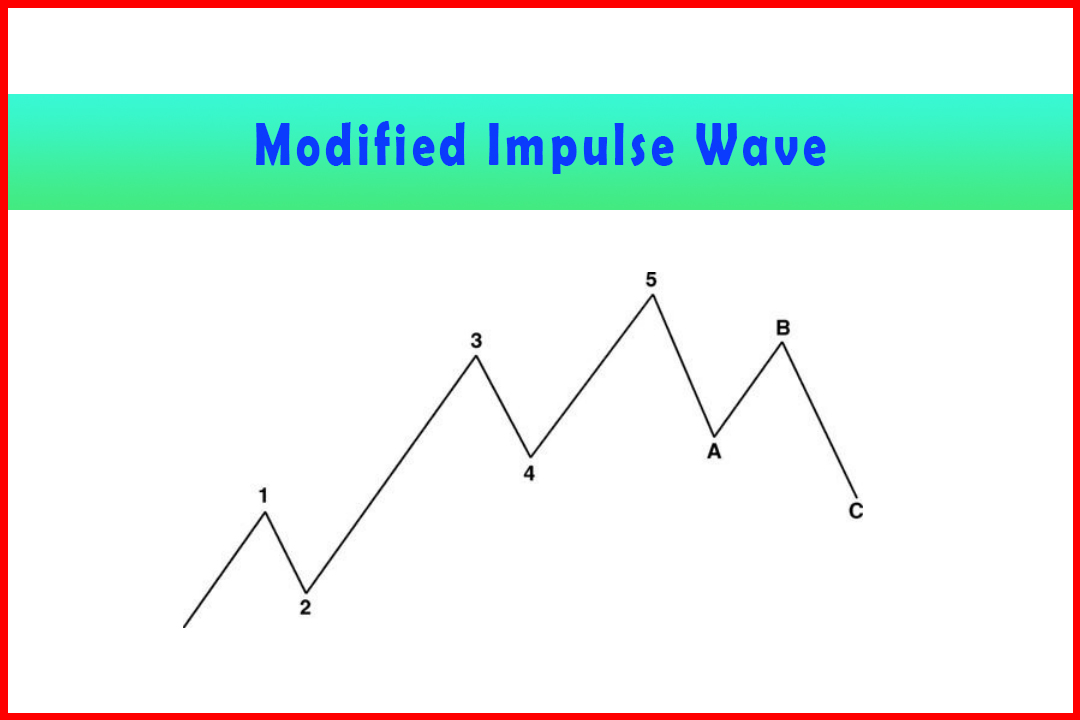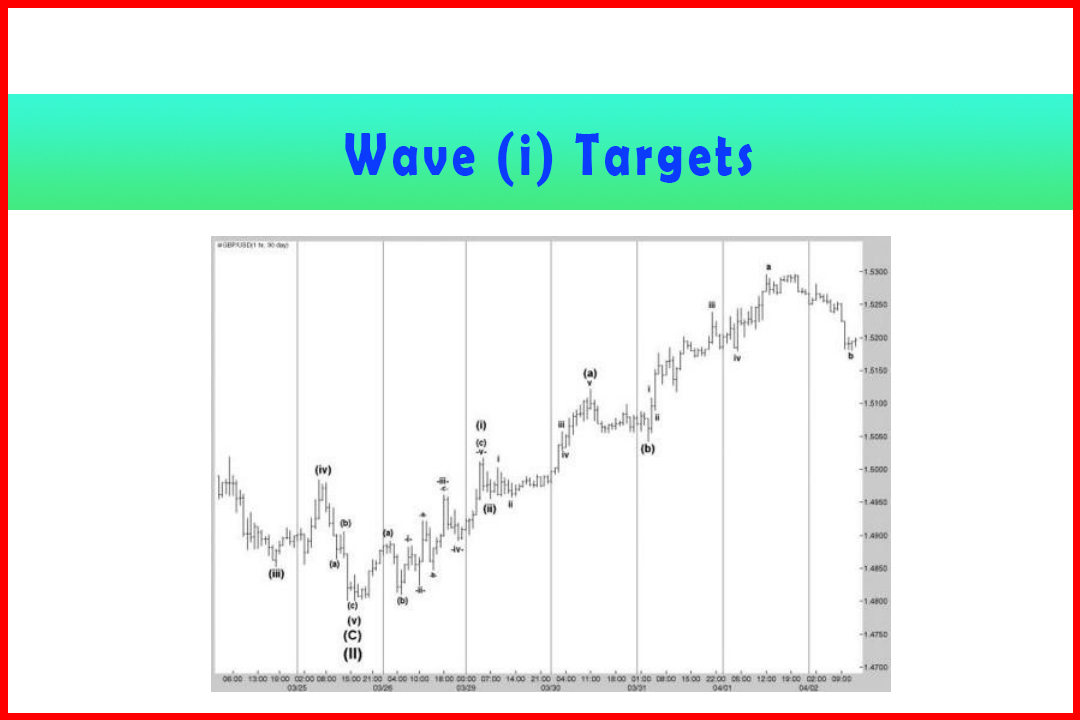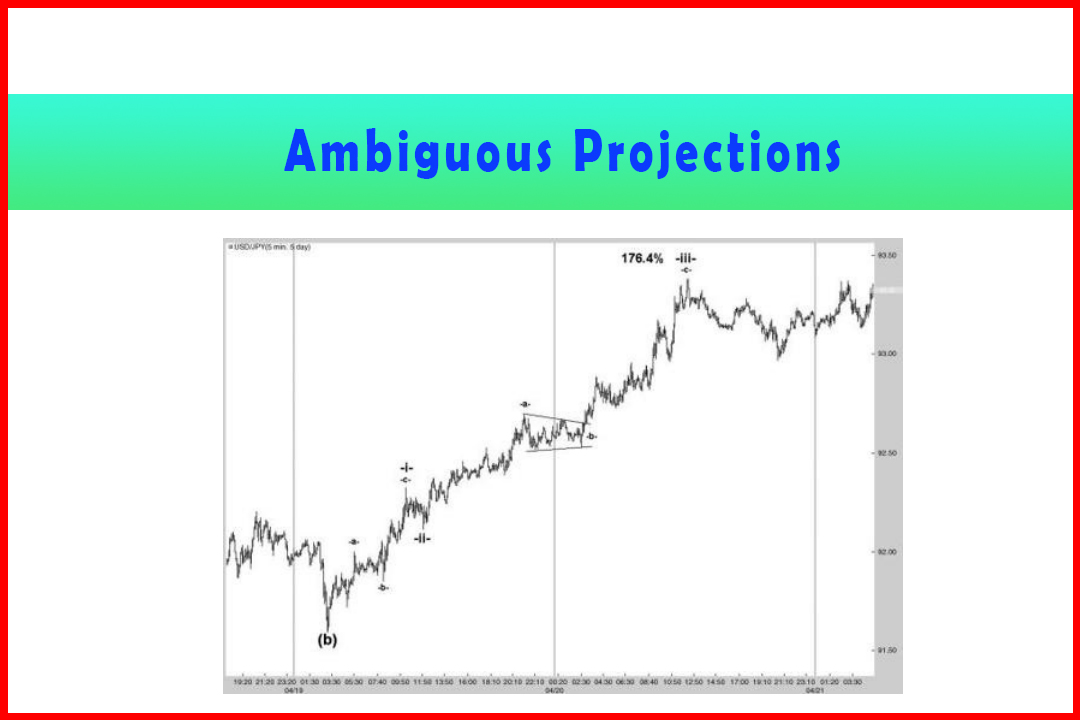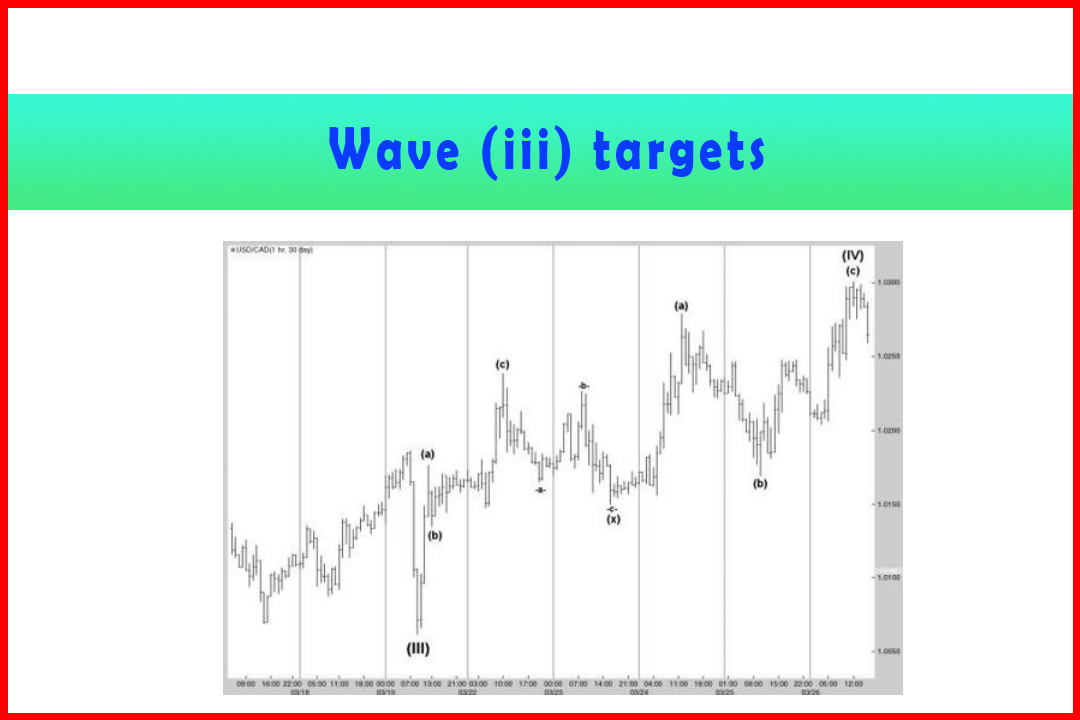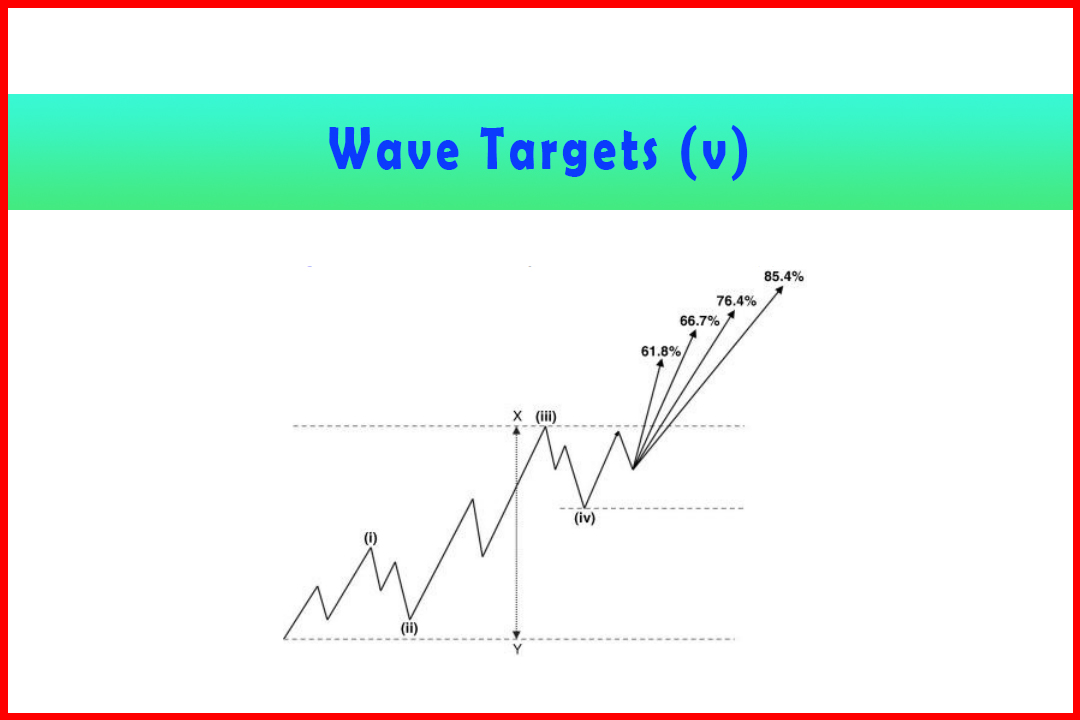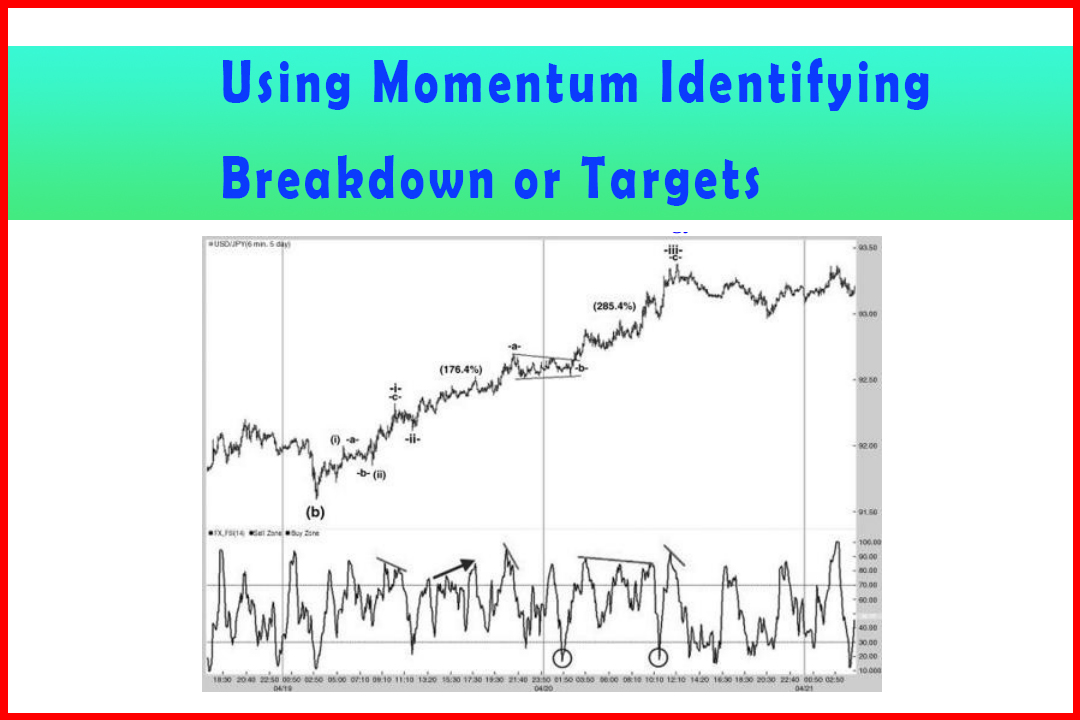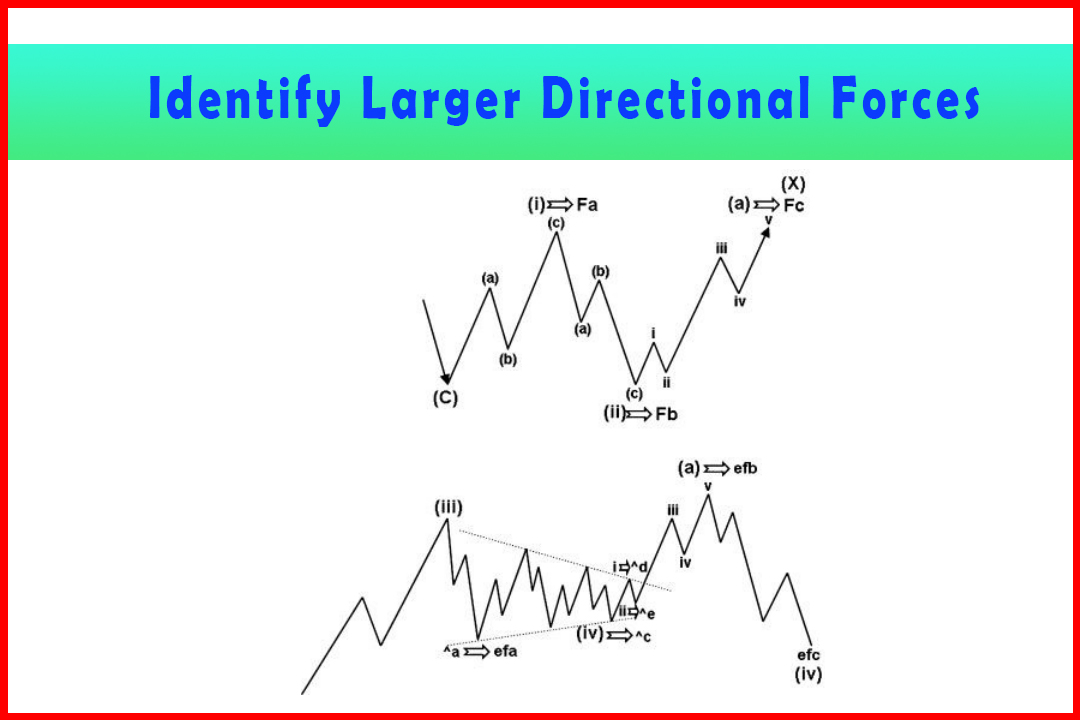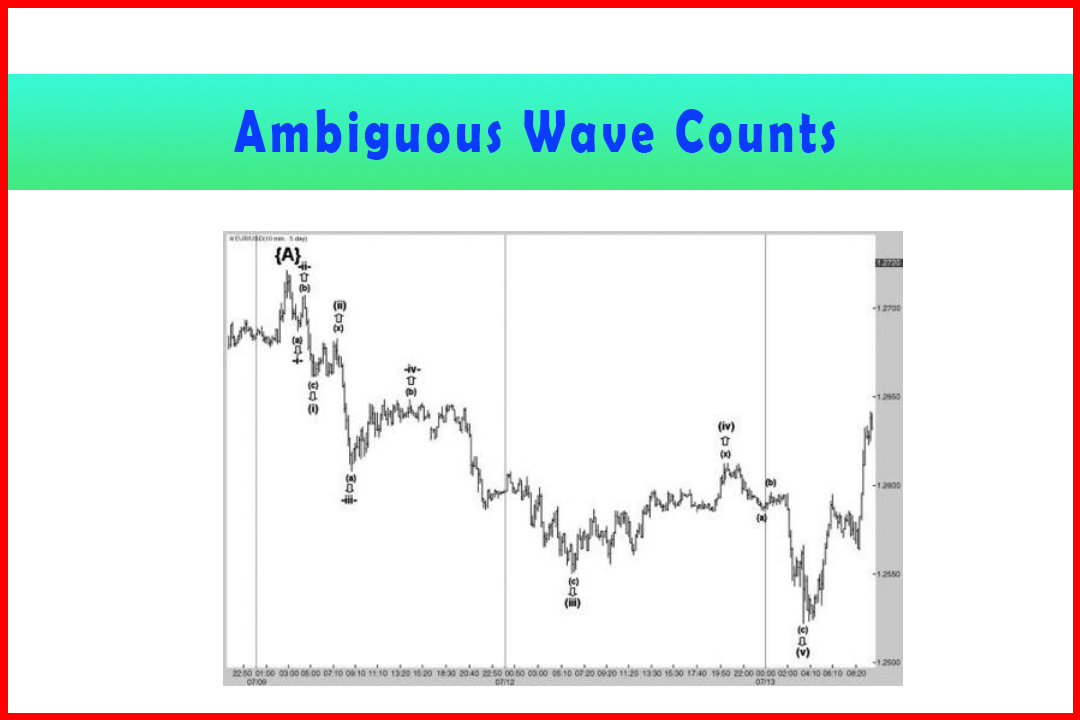Extended Wave (v)
Elliott wave targets, Fifth wave targets, Best Trading Strategy, Best Pattern Trading
Course: [ Harmonic Elliott Wave : Chapter 5: Modified Wave Structure in Forecasting ]
Elliott Wave | Forex | Fibonacci |
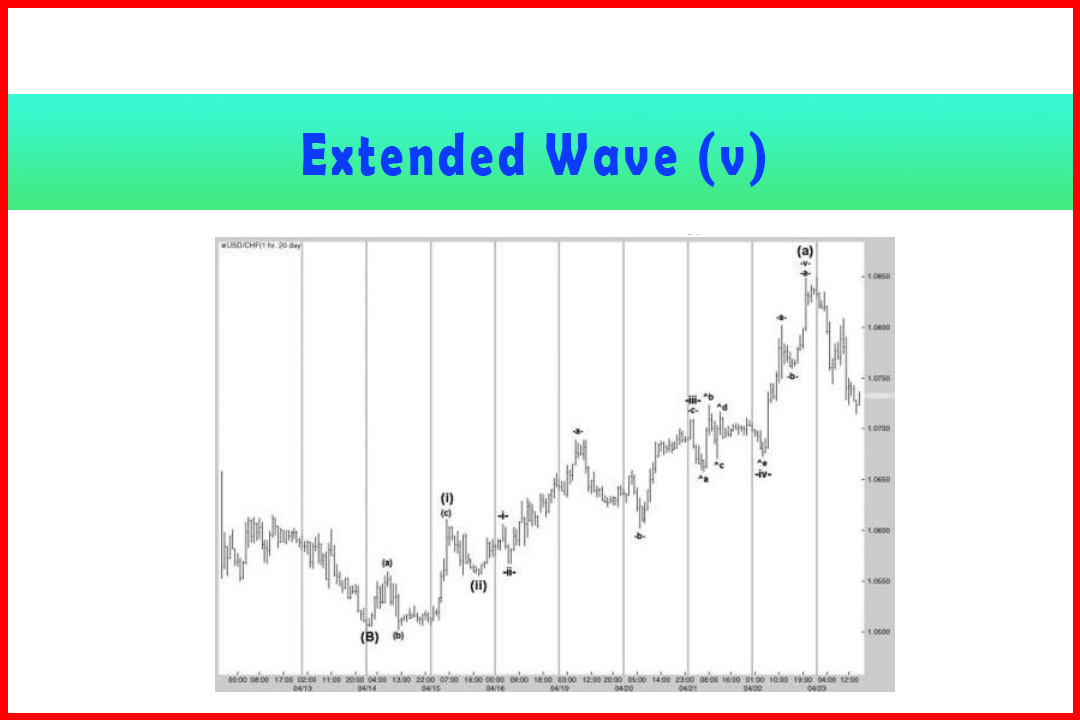
The topic of extended fifth waves was covered in both Chapters 3 and 4 to demonstrate how they develop. However, these can be some of the most difficult to anticipate, and due to the common sharp and aggressive development the final stalling point can be difficult to predict.
Extended Wave (v)
The
topic of extended fifth waves was covered in both Chapters 3 and 4 to
demonstrate how they develop. However, these can be some of the most difficult
to anticipate, and due to the common sharp and aggressive development the final
stalling point can be difficult to predict.
The
same situations described for identification of common chart barriers such as
prior Wave (iv)'s, swing peaks or troughs, or even congestion areas
applies also to extended fifth waves. However, it is good practice to observe
prior wave projections, especially in Wave (c) developments as a stalling point
for intermediate waves can occur at these levels. This occurred in the hourly
USDCHF market as I was writing this chapter.
Figure
5.13 displays a rally in Wave (i) and Wave (ii) followed by a Wave (a) with
extended Wave -v-in the hourly USDCHF market. In some ways it was an unusual
and somewhat complicated structure to follow, as the Wave -b-of Wave - iii-was
unusually deep for the prior Wave -ii-but then translated into a shallow Wave
-iv-in a Triangle in which Wave Ab was expanded. The final Wave -v- extended by
114.6% of the distance from Wave (ii) to the end of Wave -iii-.
Figure 5.13 Wave
(a) Rally in Wave (iii) in Hourly USDCHF Ending in an Extended Fifth Wave
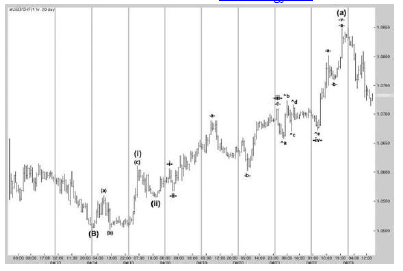
While
being an extension ratio I have seen on several occasions, it is not that
common and to anticipate this without any other factor would be difficult.
However, it will be noticed that the entire rally originated from the 1.0501
low which is labeled Wave (B). The Wave -v-came to an end just two points below
the wave equality target in Wave (C). While this move is still in progress at
the time of writing and I cannot be totally certain that the final high has not
been seen at 1.0849, the structure of the rally to that point does not appear
to be in five waves. Indeed, I suspect that the entire rally began from the
Wave (X) low at 1.0434 which I provided in an earlier example of an extended
Wave (iii). If that count proves correct then we must see an eventual move to a
new high above the 1.0897 high that was seen on February 19, 2010. From this
point I am therefore anticipating a Wave (b) of Wave (iii) and will then match
the projections in Wave (c) with those of Wave (iii).
While
in this example the Wave (a) of Wave (iii) ended at the wave equality target in
Wave (C), I have also noticed that they can stall at short Wave (iii)
projections such as the 176.4% extension. After the Wave (b) retracement and
follow-through in Wave (c) the final Wave (iii) extension could be around
261.8% or 276.4% or more.
Harmonic Elliott Wave : Chapter 5: Modified Wave Structure in Forecasting : Tag: Elliott Wave, Forex, Fibonacci : Elliott wave targets, Fifth wave targets, Best Trading Strategy, Best Pattern Trading - Extended Wave (v)
Elliott Wave | Forex | Fibonacci |
